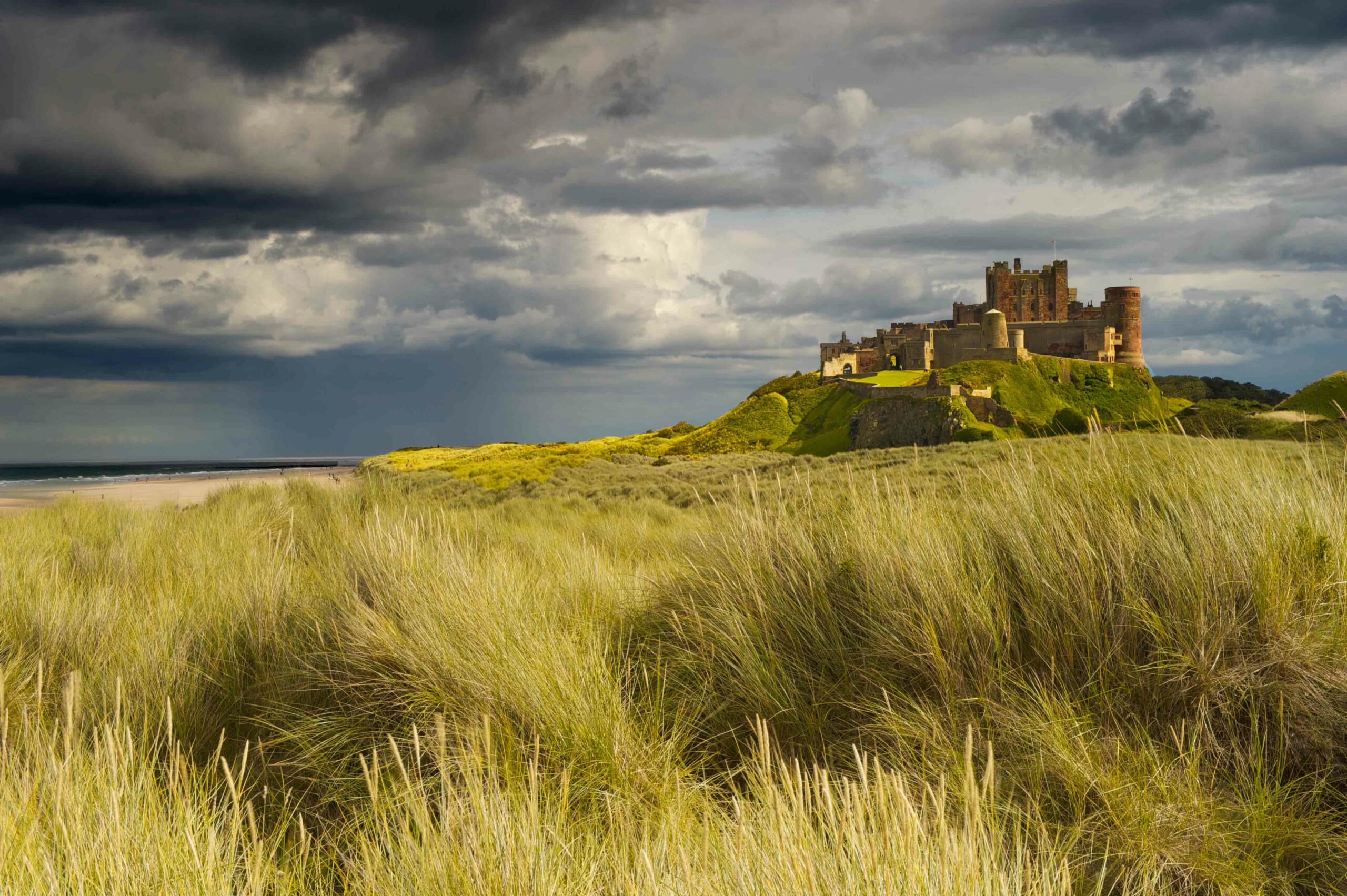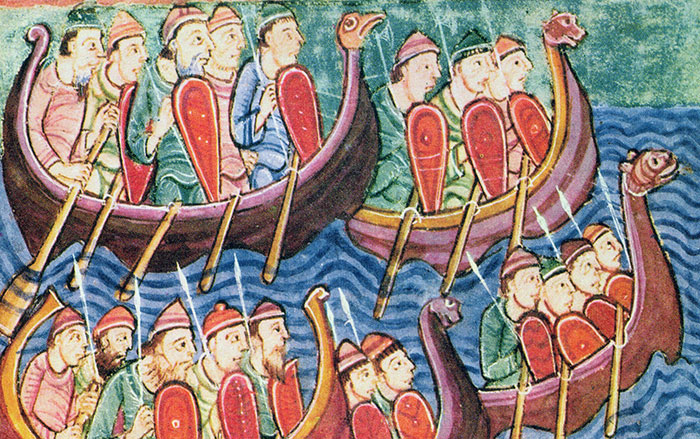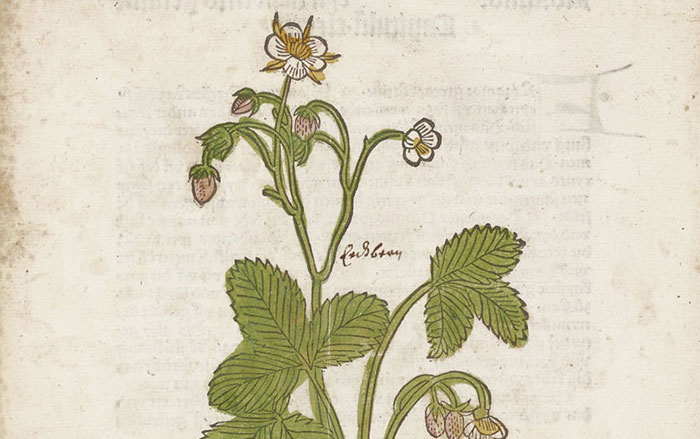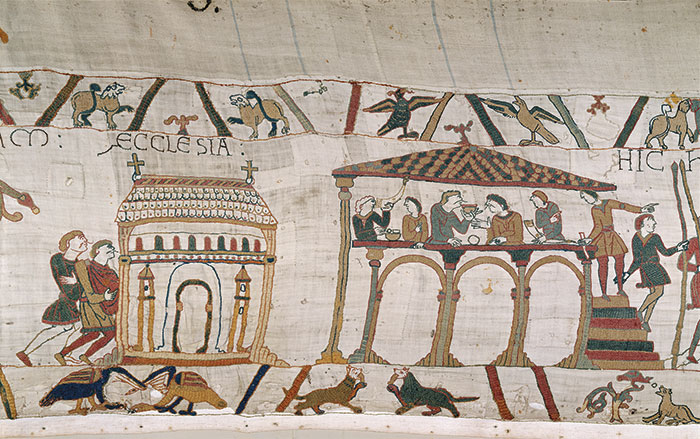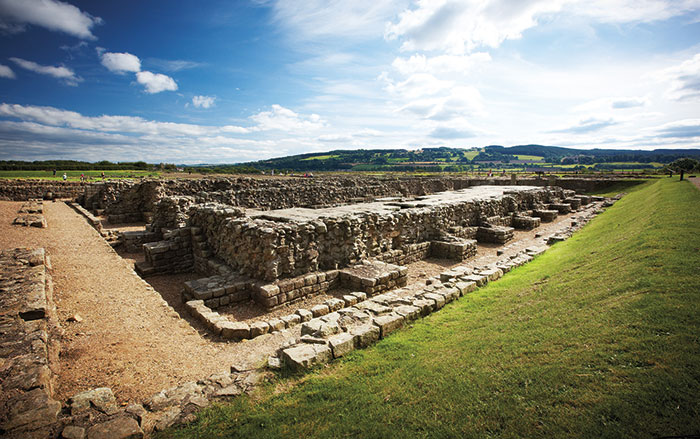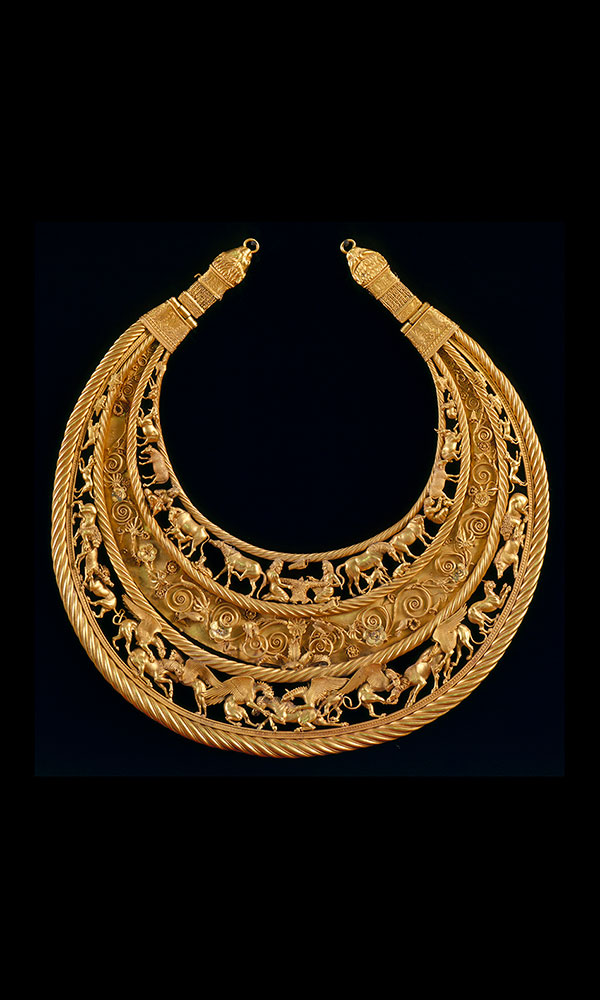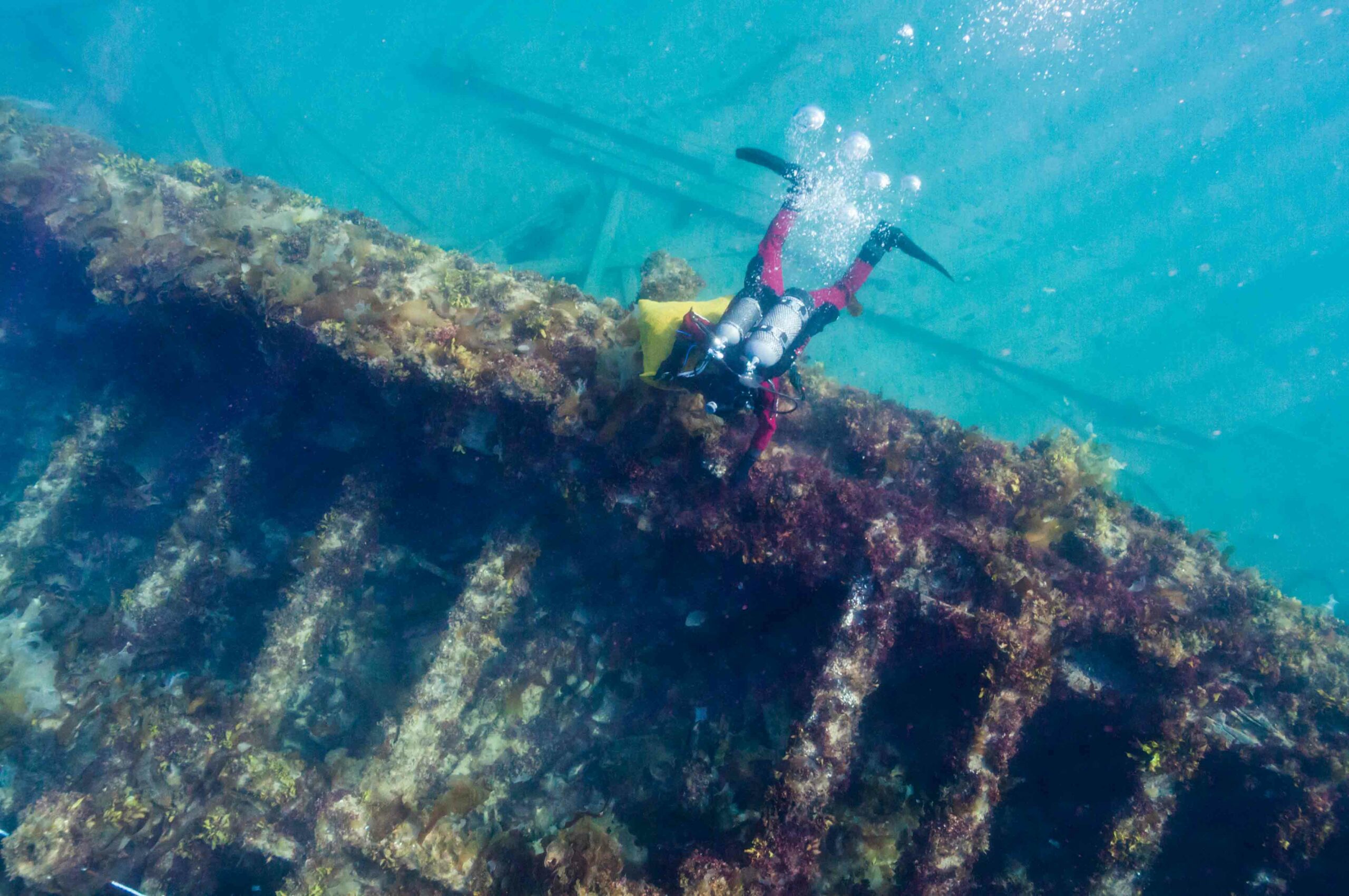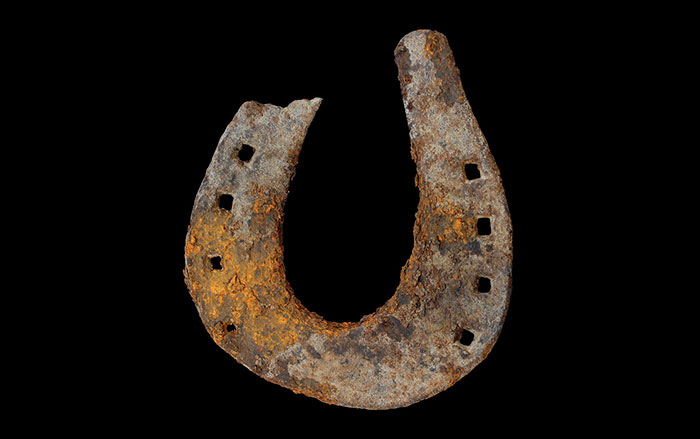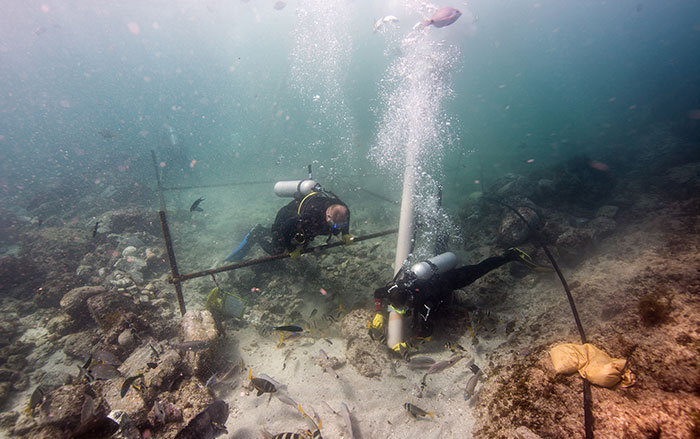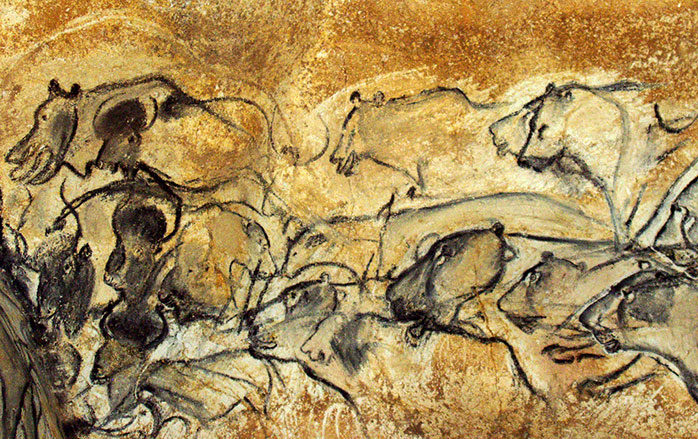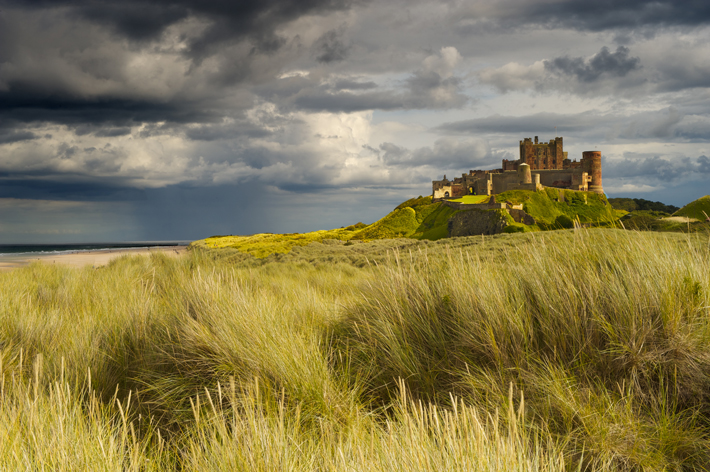
On the windswept northeastern coast of England, Bamburgh Castle rises high above a massive outcrop of black dolerite. Its brooding sandstone fortifications command sweeping views of the surrounding county of Northumberland, which was once the heart of the medieval kingdom of Northumbria. Visit the castle today, and what you see is an ornate Norman fortress that was extensively rebuilt by its owners in the eighteenth and early twentieth centuries, though traces of medieval masonry are still visible in many of the buildings. But view the site through the eyes of archaeologist Graeme Young, and a different vision of the castle emerges. On his morning tea break, Young takes a few moments from supervising his crew to explain that he has spent 20 years excavating inside and around Bamburgh in an effort to understand the site’s 2,000-year history. Beneath the stately grounds of the modern castle, he and his team have unearthed the remains of a royal citadel from the early medieval period, when Northumbria’s Anglo-Saxon kings made this nearly impregnable volcanic plateau their seat of power. In the popular imagination, this era is the violent and barbaric Dark Ages, but Young suggests that discoveries here paint a more nuanced picture. “We’ve long known Bamburgh was an important site during the Anglo-Saxon period,” he says, “but we’ve discovered it was much more cosmopolitan that we imagined.”
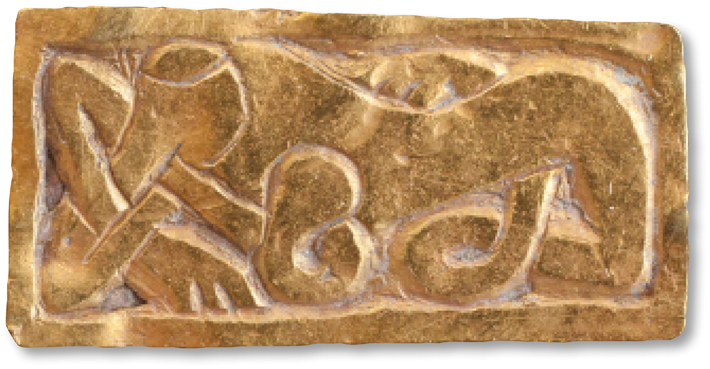
Sitting in a small office tucked into the wall of Bamburgh’s west courtyard, Young tells the unlikely story of archaeology in the castle. It begins in the 1960s, when famously eccentric archaeologist Brian Hope-Taylor started to excavate inside the castle walls. He had previously dug at a nearby early royal Anglo-Saxon settlement called Yeavering that he believed was a co-capital with Bamburgh of the kingdom of Bernicia, which predated Northumbria. “He was one of the first archaeologists to seriously study Anglo-Saxon sites,” says Young. “He really was a pioneer.” Scholars consider Hope-Taylor’s meticulous publication of the Yeavering excavation a landmark in Anglo-Saxon archaeology. Unfortunately, though he made several spectacular discoveries at Bamburgh, including the best-preserved Anglo-Saxon sword in Britain and a solid gold plaque depicting a stylized animal known as the “Bamburgh Beast,” he was not able to publish his results before his death in 2001.
Young has a personal investment in Hope-Taylor’s work. He grew up visiting Bamburgh and credits the formative experience of exploring the castle as a boy with inspiring him to become an archaeologist. In 1996, he and his colleagues contacted the castle owners to request permission to follow up on Hope-Taylor’s excavations. “We didn’t know where he had dug,” says Young, “so we were hoping to use geophysics and small-scale excavation to determine that.” The owners gave their permission, and the small team began their work. Twenty years later, Young shakes his head and smiles at the memory. “We were thinking of it as a short project that we’d do on weekends among friends,” he says. But that short project quickly bloomed into a much bigger effort when it became apparent to the team that the richness of the site meant it would take years to understand it properly. They also became the unexpected heirs of Hope-Taylor’s considerable legacy.
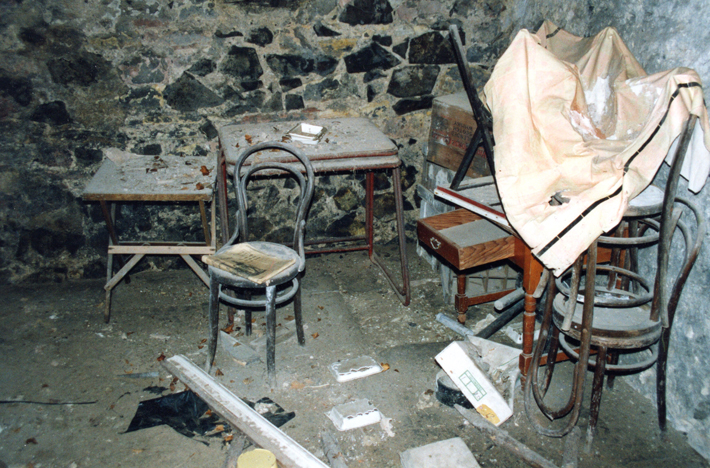
While searching for office space, Young and the castle’s groundskeeper broke the locks on the small rooms built into the castle walls that had sat unopened for decades. What they found inside was a kind of time capsule of Hope-Taylor’s fieldwork. Still astonished by the discovery, Young shares pictures of the rooms that show they were filled with dust-covered boxes of bones, artifacts, and soil samples, all excavated by Hope-Taylor. A 1974 copy of the Daily Telegraph still resting on a chair helped establish the date of the last field season. “We’ve accidently inherited an enormous body of work at an extraordinary site,” says Young. Hope-Taylor’s students later found years’ worth of Bamburgh excavation notes, and even artifacts, such as a sword, in his apartment. Now, the Bamburgh team’s task is not only to understand their own excavations, but to synchronize their findings with the copious record Hope-Taylor left behind.
University of Durham archaeologist and Anglo-Saxon expert Rosemary Cramp knew Hope-Taylor well and was glad to see archaeologists return to Bamburgh. “It really is a key site,” says Cramp, who visits the excavations but is not officially involved with the project. “High points like this are strongholds from prehistoric times onwards, but very few have the depth of Anglo-Saxon deposits that you have at Bamburgh. We still know so little about the early medieval period. There’s everything to find out, really.”

Though a fortress has probably stood above the crag at Bamburgh since prehistoric times, little is known about the site before the Romans arrived. Ancient historians record that the Britons built a coastal fort at the site and that it was the stronghold of the Votadini, a tribe that lived beyond the northern frontier of the empire, but whose leaders probably depended on Roman power for their authority. “Hope-Taylor discovered Roman-era pottery at Bamburgh,” says Young. “That helps confirm that Britons living here were aligned with Rome. The Romans might have even been paying off warlords to help protect the frontier.” While the team has found stray Roman-era artifacts, such as pieces of glass, they have yet to dig as deep as Hope-Taylor did. For now, they are focused on the Anglo-Saxons.
When the Romans abandoned Britain in the early fifth century, the Germanic Angle, Saxon, and Jute tribes, collectively called Anglo-Saxons, took advantage of the power vacuum and sailed across the North Sea to settle in England. Much of what we know about the turbulent early Anglo-Saxon period comes from The Ecclesiastical History of the English People, written by the Venerable Bede, the eighth-century monk known as the father of English history. A native of Northumbria, Bede left an especially rich (and some would say biased) account of the kingdom. “Bede often mentions Bamburgh as the kingdom’s ‘royal city,’” says Young. “That tells us that it was a high-status center.”
The site first rose to prominence in 547, when an Angle warlord known as Ida the Flamebearer seized the Briton coastal fortress and founded a kingdom called Bernicia. His grandson Æthelfrith brought the neighboring Anglian realm of Deira under his dominion around 604, creating the unified kingdom of Northumbria. Æthelfrith renamed the citadel Bebbanburgh, or Bebba’s fortress, after one of his wives. For the next three centuries it played a central role in English history, with its throne often changing hands between warrior kings. Remarkably, an early archaeological find at Bamburgh allows scholars to visualize exactly what one of those thrones would have looked like.
In the late nineteenth century groundskeepers clearing foliage discovered intricately carved stone fragments. For more than a hundred years they were thought to be the remains of a standing cross. But when Rosemary Cramp reexamined the pieces, she identified them as the arm of a stone chair dating to around 800. Similar carved stone chairs have been found at Northumbrian monasteries, and are thought to be bishops’ thrones. Since Bamburgh was a secular site, such a throne would have been used by the Northumbrian kings themselves and likely played an important ceremonial role. “It’s an amazing artifact,” says Young. “These thrones were called gift-stools, and were central to a fundamental ritual during which a warrior would receive gifts from his lord in full view of the court, binding him to the king until death.” A replica of the throne now sits in the central courtyard at Bamburgh.
Perhaps the most famous of the kings to have sat on the Northumbiran throne was Æthelfrith’s son St. Oswald, a warrior king of great renown who was known as “Whiteblade.” As Bede tells it, when Æthelfrith was killed in battle in 617 by a rival king, Oswald fled north to seek sanctuary with the Irish. After 17 years, he returned to the kingdom and retook the throne by force. He also brought with him Irish monks who converted pagan Anglo-Saxons and founded a monastery on the island of Lindisfarne, which became an important center of medieval Christianity. Oswald ruled from Bamburgh as the most powerful king in England for eight years, only to be killed in battle and have his corpse dismembered. Bede records that Oswald’s followers found his arm, which would not decompose. They brought this incorruptible arm to Bamburgh, where it was kept in a silver shrine. Oswald was later canonized and became the object of a cult that was venerated throughout Europe. When Young and his team conducted remote sensing at the castle’s twelfth-century chapel, they found that it was likely built on the remains of Bamburgh’s seventh-century church. “That was probably where Oswald’s arm was kept,” says Young.
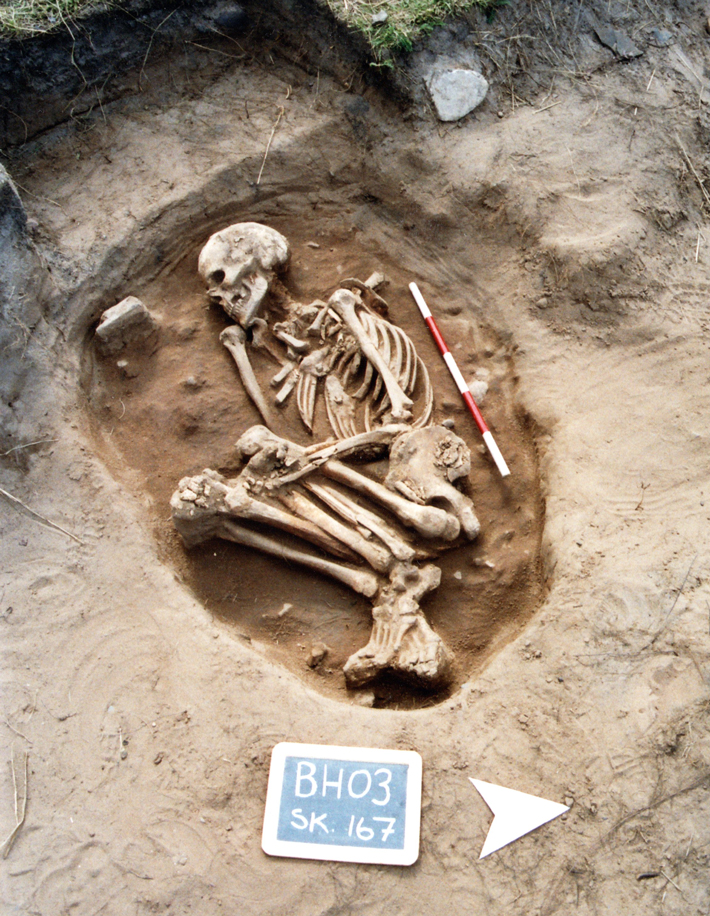
Another glimpse inside Bamburgh’s royal court came soon after Young’s project began, when a winter storm exposed early medieval burials outside the castle. The team excavated the site, known as the Bowl Hole cemetery, between 2001 and 2007, eventually recovering 91 skeletons. Durham University bioarchaeologist Charlotte Roberts led the team that studied the remains. They recently published their results: Most of the people buried in the cemetery were likely aristocratic members of the court. “They were mainly well-nourished and of high stature,” says Roberts, “though many had severe tooth decay that could have been brought on in part by high consumption of mead.”
Roberts’ team also analyzed strontium isotope levels in the teeth, which can pinpoint where an individual spent his or her childhood. The results showed the people buried at the Bowl Hole cemetery were a surprisingly diverse group. “We found that relatively few locals were buried in the cemetery,” says Roberts. “Most of these people came from other regions of the British Isles.” Anglo-Saxon kings would often exchange children or close relatives as royal hostages to ensure that the terms of treaties were observed. Some of the individuals could have been staying at Bamburgh as just this kind of hostage. The team also found one man who came from the Outer Hebrides, near to where St. Oswald fled during his exile. Artifacts found with the burial and radiocarbon dating show that the man lived in the seventh century, around the same time as Oswald. Perhaps he accompanied the famous king back to Northumbria as part of his retinue. “That’s as close as archaeology can get us to the Oswald story,” says Young.
A few of the people interred in the cemetery came from even farther afield. “Some of the strontium signatures show childhoods spent in Scandinavian countries, and this is centuries before the Viking era,” says Roberts. Others were from the southern Mediterranean or North Africa. “And it wasn’t just men,” she says, “but women from Scandinavia and southern Europe as well.” Whether the people lived permanently at Bamburgh or died there while visiting, possibly while on a pilgrimage or working there temporarily, is impossible to know. But clearly, at its height, Bamburgh was a cosmopolitan place, with people from across Britain and Europe gathering in the great hall where the Northumbrian kings held court.
Young has even pinpointed just where those courtiers would have gathered. During a geophysical survey of the castle’s inner ward, the team discovered traces of a large royal mead hall. The Anglo-Saxon poem Beowulf describes a similar royal structure as a “timbered hall, splendid and ornamented with gold. The building in which a powerful man held court that was the foremost of halls under heaven.” Some scholars have suggested that the poem may have been composed in Northumbria. “It’s possible,” says Young, “that around 1,200 years ago, a poet recited Beowulf for the king in that great hall.”
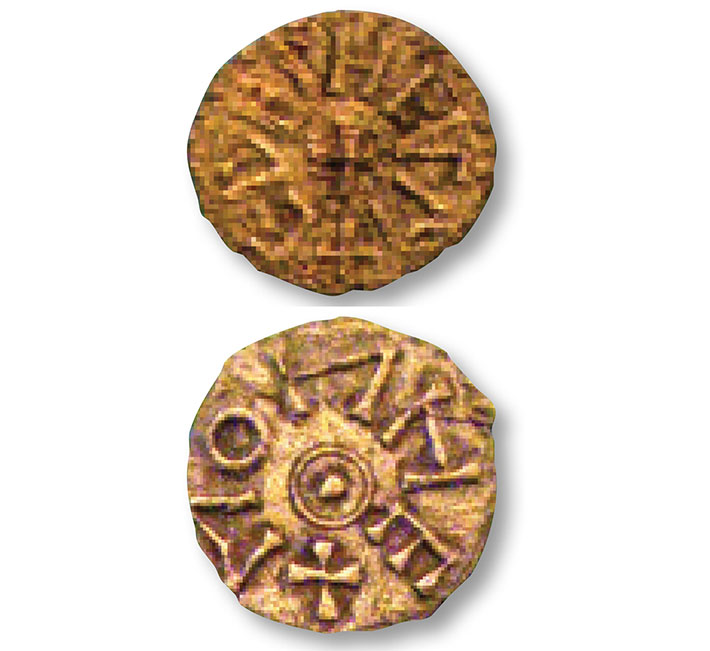
Not all the finds at Bamburgh relate to the royal Anglo-Saxon court. Just outside the office where he takes his tea breaks, Young and his team have unearthed a large metalworking area, littered with iron slag and cast-off metal artifacts, including some 300 styca, or Anglo-Saxon coins. “It might have functioned something like a mint,” says Young. “They were making so many coins here that they didn’t bother to pick up ones that fell on the floor.”
Walking around the excavation, Young points out sections Hope-Taylor originally explored, as well as subsoil that shows traces of intense burning. It’s possible that that burning could relate to a dark period in Bamburgh’s history, when the Vikings first raided and then settled in the kingdom. In fact, Northumbria was the first of the Anglo-Saxon kingdoms to be ravaged by the Vikings. From the castle’s battlements, visitors today can clearly see Lindisfarne, where, in 793, Norsemen carried out an infamous raid on the island’s monastery, a brutal event regarded as the beginning of the Viking Age.
While the descendants of the Northumbrian kings continued to rule the area around Bamburgh as earls after the Norse invasions, a Viking force successfully sacked the fortress in 993. The Vikings may have burned buildings when they took the citadel, but Young believes it is just as likely that the burned soil he’s unearthed is evidence of a massive fire that was caused by Bamburgh’s resident metalworkers themselves. “It may have been an industrial accident,” says Young, “rather than localized evidence of an attack.”
Fires would have been a constant threat to Anglo-Saxons, who have long been thought to have largely lost the art of making stone buildings and instead built almost exclusively with wood. But Young and his team are finding evidence that the people in Bamburgh knew more about stonework than was previously believed. “We think of Anglo-Saxon England as a wooden world, really,” says Young. “And originally we believed the citadel was defended mainly by a wooden palisade.” But evidence for batch production of mortar on a large scale at Bamburgh, first discovered by Hope-Taylor, led them to think stoneworking might have been more important than they realized. In 2008, during excavation around the castle’s chapel, they unearthed a stone wall dating to the eighth century. “We know there were Roman-style stone churches in Northumbria that were largely rebuilt,” says Young. “I think it was rare, but we still probably underestimate how much stone building was done by the Anglo-Saxons.” He thinks that Bamburgh’s stone walls were not only formidable defensive structures, but also a deliberate reference to the power of the Roman world, a showy display of authority that would have stood out dramatically on the landscape.
Young continues his walk to a second large area under excavation, this one near an entrance to the castle that has been known as St. Oswald’s Gate since at least 775, when it is mentioned in a chronicle describing Bamburgh. Here the team has found trash deposits containing vast amounts of animal bones that show the castle residents were eating choice cuts of meat. They’ve found evidence here for a number of different grains, and even lentils, demonstrating that the court enjoyed a diverse diet along with its mead.
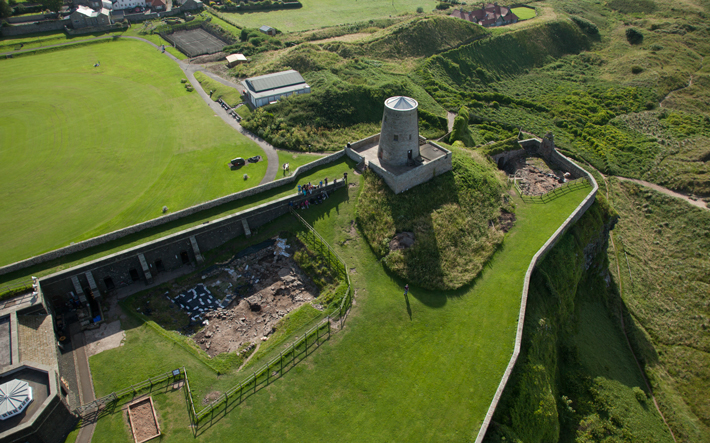
Near the trash deposits they have also unearthed the remains of two small halls, one timber and the other stone, where it’s likely Bamburgh’s gate wardens, who controlled access to the fortress, lived and worked. St. Oswald’s Gate is now largely made of eighteenth-century masonry, but as Young ducks through the small entryway, he recalls an earlier excavation he conducted under the steep steps leading away from the gate. “We took off the eighteenth-century paving and exposed the bedrock below,” he says. What they found was a dolerite track polished to a sheen from hundreds of years of being trod upon. “Everyone who lived at Bamburgh would have come through this gate,” says Young. “All the people we found buried in the cemetery would have known this walk.” The steep path is stark evidence of how difficult it must have been for enemy warriors to approach England’s most formidable fortress, but it’s also a reminder that the citadel was once the home and workplace for generations of Anglo-Saxons, who would have struggled up this path every day.
Young begins to talk about how the Bamburgh Project is nearing the end of its excavation phase, and mentions that publication will soon be the focus of most of the effort. As he speaks, he stops and points to a church in the distance, located in the village that spreads out to the south of the castle. “All the people from the cemetery will be reburied there,” he says. With the study of their remains complete, the members of one of England’s greatest Anglo-Saxon courts, who came to the citadel from throughout Britain and Europe, will be returned to the earth.


